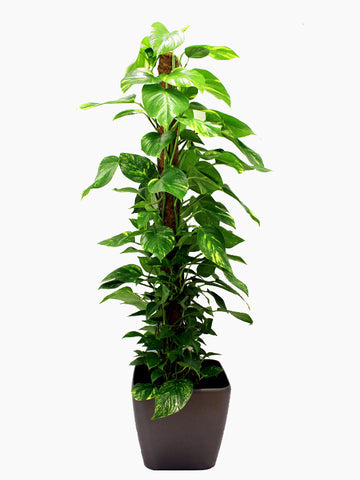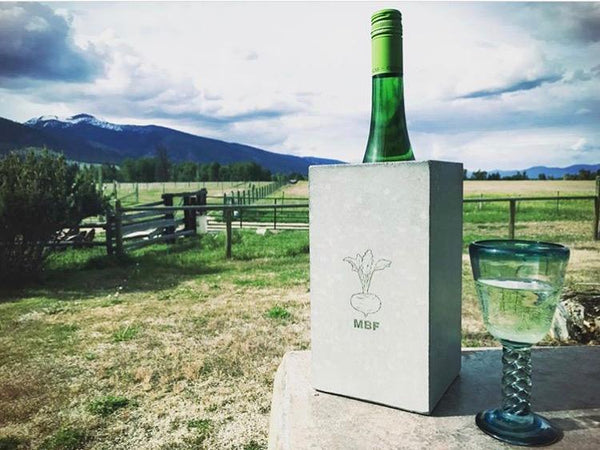Best Indoor Plants for Clean Air (And How to Manage Them)
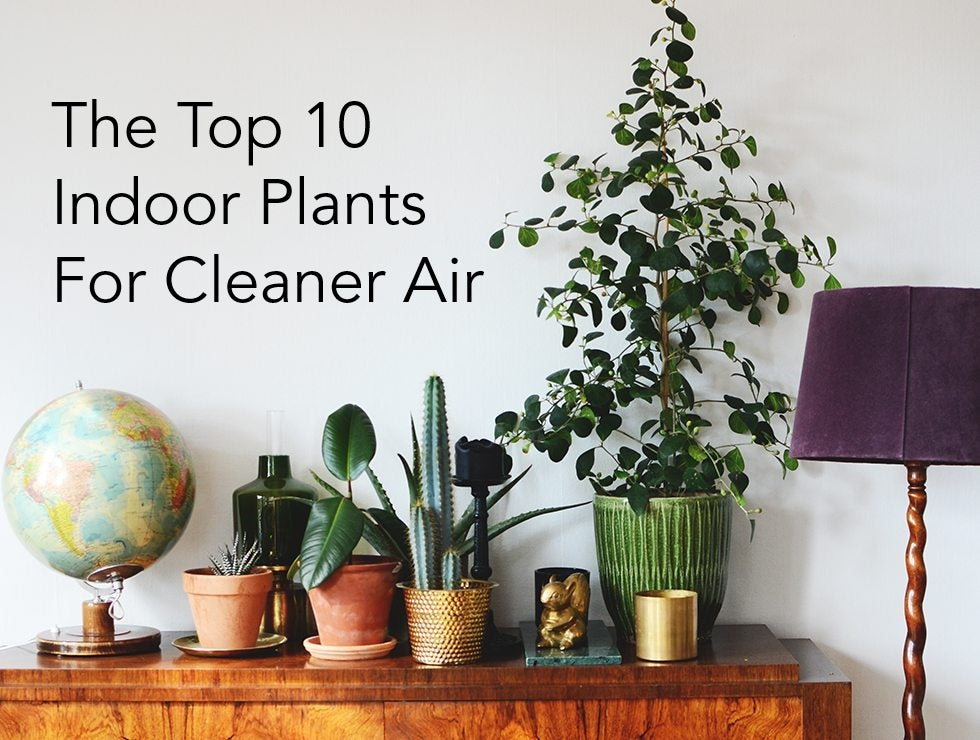
Plenty of plants are hyped as being great for purifying the air around you. Well, we at Angle 33 wanted to come up with the definitive list. To help, we enlist some research created by an organization that was smart enough to get us to the Moon and back (several times.) We used a NASA study, performed in 1989 and supported by recent research to come up with the true top ten indoor plants for clean air. Some plants are listed as toxic to house pets. Need a simple way to enjoy their air purifying qualities while keeping your pet safe? Just keep them out of reach! They are only harmful if eaten.
10. “Janet Craig” - Dracaena deremensis
Spanning a native region from Sudan, south to Mozambique and west to Angola and Côte d'Ivoire, the Janet Craig is a type of Dracaena that is grown in hedges in warmer climates. As it turns out, this flowering shrub is also great for cleaning the air in your home. Managing any member of the dracaena family is a breeze. Opt for a brightly lit spot indoors or a shadowy spot outdoors, and water frequently, but conservatively, these guys don’t mind being a little dry! Too much sun or heat and they can start to burn, and any temperatures below 50 degrees Fahrenheit are much too cold. 70-80 degrees is a comfortable climate year round for the Janet Craig. Be careful, however, it can be poisonous to your pets.
9. “Devil’s Ivy” -Epipremnum aureum
Don’t let its sinister name fool you, this sprawling pothos plant is already one of the most popular houseplants in the world! Found in tropical regions all around the globe, this remarkably resilient plant has been praised for its ability to purify air for decades. The rules for caring for Devil’s Ivy are extremely simple to abide by, keep it out of direct sun and complete darkness. To water, simply dampen the top layer of soil, as the roots won’t dig too deep. And just about any standard potting soil will do. Sound simple enough? Be careful, however, they can be harmful to your four-legged friends.
8. “Barberton Daisy” - Gerbera jamesonii
Indigenous to Southeastern Africa, the Barberton Daisy is known for the variety of vibrant colors it can produce when flowering. This vibrancy has made it a popular addition in many brides’ bouquets. They can flower randomly at any time of the year, with flowers remaining present from four to six weeks. Care for the Barberton Daisy can be a little more tedious, but is still pretty low stress compared to many houseplants. Keep them in an area with a high amount of light, the more direct the better, and make sure they don’t get too cold. Keep the soil damp at all times and average to high humidity is preferred. A benefit of this plant? The Barberton Daisy isn’t harmful to your pets.
7. “Flamingo Lily” - Anthurium andraeanum

This oddly shaped yet strangely beautiful flower is native to both Ecuador and Columbia and thrives in similar warm, humid conditions. To provide that humidity, keeping the Flamingo Lily in the bathroom or kitchen where plenty of steam fills the air is a great option. They are susceptible to being overwatered, but like a consistently moist soil and frequent misting. Keep it away from direct light, but the more light it takes in, the better. Unfortunately, the Flamingo Lily is also toxic to pets, so keep it out of reach.
6. “Bamboo Palm” - Chamaedorea seifrizii

Native to subtropical and tropical regions of the Americas, the Bamboo Palm is a small palm that can grow anywhere from one foot to nineteen feet (I wouldn’t recommend letting them grow that tall)! Unlike most palms, it can survive just fine in low light conditions but thrives on bright, indirect light to grow to a full mature height of near twelve feet. Care is simple, just make sure to water it evenly when the soil becomes dry, and make sure to watch for mite infestations. If mites do infest your Bamboo Palm, gently washing the leaves with a soapy mixture, and removing browning leaves frequently. Luckily for indoor plant lovers, this giant palm isn’t poisonous to pets, which is good because of their incredible height and sprawl.
5. “Snake Plant” (Mother in Law’s Tongue) - Sansevieria trifasciata
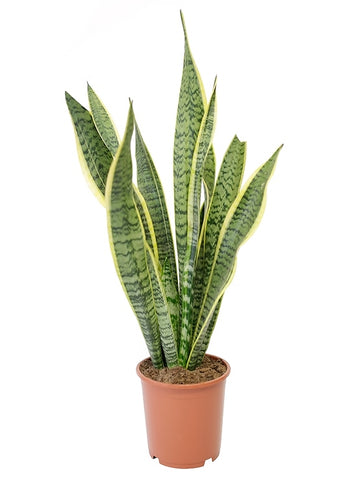
This lovely plant is known by many names. Native to a region spanning from Nigeria to the Republic of the Congo, the Snake Plant is one of the more resilient houseplants out there, being notoriously difficult to kill. Long leaves (up to thirty inches) soak up all available light, thriving in well-lit areas but tolerating low light just fine. The easiest way to kill it is too much water, often preferring its soil to become fully dry. They can grow to be quite large, so keeping them in lower light and dryer actually helps to make the Snake Plant easier to manage. Like most plants on this list, the Snake Plant can be toxic to your furrier friends.
4. “English Ivy” - Hedera helix

Native to Europe and areas of western Asia, the English Ivy is recognized as either a beautiful plant of a noxious weed. Grown in the home, however, it can be kept from sprawling indefinitely and made much more manageable. Seen most commonly growing up the walls of European buildings or on the forest floor, this ivy serves both an aesthetic purpose and a functional purpose of helping regulate the temperatures of buildings in warmer weather. Preferring high levels of indirect light, the English Ivy is a resilient plant that can tolerate some dry soil in between waterings. An occasional misting of the foliage keeps the plant refreshed and healthy-looking. Keep it up high, as it can be toxic to pets.
3. “Red-Edged Dracaena (Dragon Blood Tree)” - Dracaena marginata
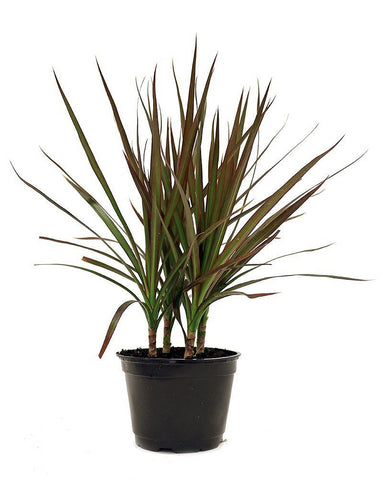
Winner of the coolest name award, the Red-Edged Dracaena, also known as the Song of India or the Dragon Blood Tree, is known as one of the most resilient houseplants available. The Dracaena family is one of two families that have multiple entries on this list, and their durability and benefits is a simple explanation why. Being one of the best indoor plants for clean air, the Red-Edged Dracaena is also just as easy to manage as the Janet Craig we featured earlier. Let the soil dry to the touch, keep the temperature near 75 degrees, and keep them in areas of lower light. Just like the Janet Craig, this plant can be toxic for pets to consume.
2. “Peace Lily” - Spathiphyllum
One of the most popular houseplants around, the Peace Lily isn’t a lily at all. It’s a member of the Araceae family but was named a lily for it’s strikingly similar shape to other lilies. Known as the Mauna Loa, Peace Lilies can reach heights of nearly three feet, and bloom their signature white flowers (more of a modified leaf for propagation) once in the spring and often again in the fall. They like a fair amount of light, but are harmed quickly by direct sunlight, and prefer partial shade. And unlike many plants, the Peace Lily will tell you when it’s thirsty by drooping slightly. Simply try to keep the soil consistently damp, watering about once a week. Peace lilies prefer it warm, loving temperatures from 65 to 80 degrees Fahrenheit. While not as toxic as true lilies, the Peace Lily can still be quite harmful to your pets. Ironic, huh?
1. “Hardy Garden Mum” (Florist’s Chrysanthemum) - Chrysanthemum morifolium
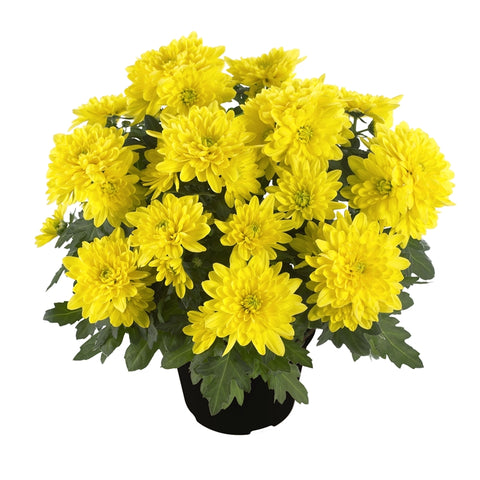
The top plant on our list isn’t only a powerhouse for providing clean air, it’s also known globally for its beauty and variety of colors. The Hardy Garden Mum is a perennial that grows early in spring and summer and is then cut to be featured in bouquets everywhere. While not the most resilient plant on this list, steps to provide care are simple enough. They love any amount of light from full, direct sunlight to partial shade, and their soil should be kept moderately damp. They are fragile when it comes to air temperature, however. So make sure to keep it above 60 degrees Fahrenheit. In all, this beast of an air filter pulls out high amounts of benzene and formaldehyde, as well as several other airborne chemicals. They can be toxic to pets, so keep them out of reach.
This list isn’t necessarily definitive, but it’s a great place to start in case you’re eager to grow indoors. From simple flowers and succulent gardens to large palms and begonias, a hint of green livens up any room and freshens up your air wonderfully. If you’re looking for planter ideas, look no further than our concrete planters, available in several sizes to meet your planting needs.Leave a comment
Comments will be approved before showing up.


